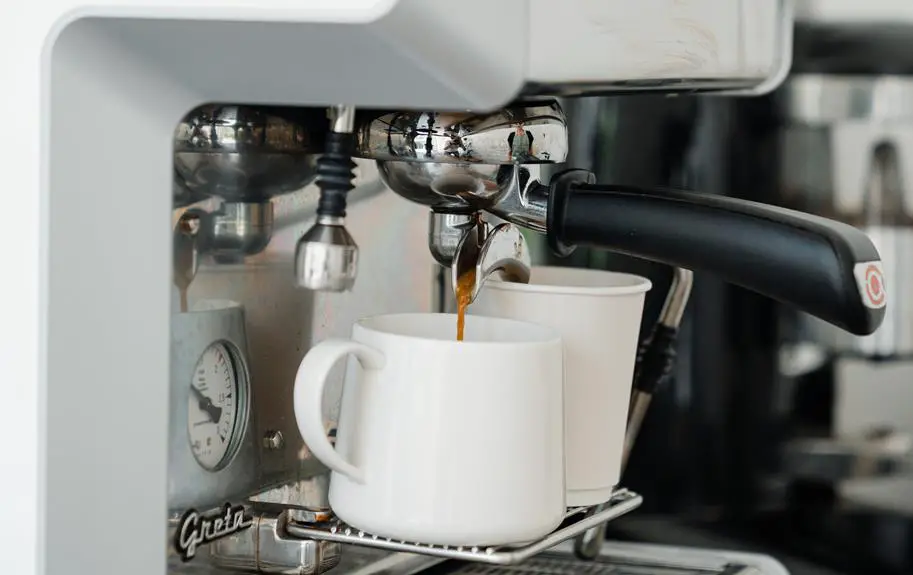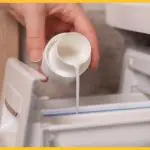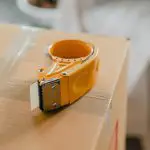Wondering why your washing machine's softener dispenser is not draining? It can be frustrating when your laundry routine is disrupted by this issue. Understanding the potential causes of dispenser clogs and faulty components is crucial.
Softener buildup and inadequate maintenance can also contribute to drainage problems. Don't worry, though – there are DIY cleaning solutions and troubleshooting tips you can try.
However, if the issue persists, seeking professional assistance may be necessary. In this guide, we'll explore the common reasons behind this problem and provide you with the knowledge to resolve it effectively.
Let's get your washing machine back to its optimal performance!
Key Takeaways
- Residue buildup and blockages in the dispenser mechanism can cause softener dispenser clogs.
- Regular cleaning and maintenance of the dispenser can prevent softener buildup and clogs.
- Water pressure can affect the drainage of the softener dispenser, with low pressure causing slow drainage and high pressure causing overflow and buildup.
- Faulty dispenser components, such as a clogged nozzle or malfunctioning valve, can also lead to drainage problems and should be regularly inspected and cleaned.
Potential Causes of Dispenser Clogs
If your washing machine softener dispenser isn't draining, potential causes of the clog may include residue buildup and blockages in the dispenser mechanism.
Softener dispenser maintenance is crucial to prevent such issues. Over time, fabric softener and detergent residues can accumulate in the dispenser, leading to clogs. To prevent clogs, it's essential to clean the dispenser regularly.
Remove the dispenser drawer and soak it in warm, soapy water, then use a small brush to scrub away any residue. Additionally, wiping down the inside of the dispenser cavity with a cloth can help prevent buildup.
Another key aspect of softener dispenser maintenance is using the right amount of softener. Using too much can result in excess residue, while using too little may not adequately clean the dispenser, leading to blockages. Therefore, it's important to measure the softener carefully according to the manufacturer's instructions.
Understanding Softener Buildup
If your washing machine's softener dispenser isn't draining, it could be due to a buildup of softener in the drain hose. Regular cleaning can help prevent this issue from occurring, ensuring that the dispenser functions properly.
Additionally, be mindful of the water pressure, as it can also affect the drainage of the softener dispenser.
Softener Clogs Drain Hose
Your washing machine's softener dispenser may not be draining due to a significant buildup of softener clogging the drain hose. When the softener accumulates and forms a clog, it prevents the dispenser from draining properly, leading to issues with dispensing during the wash cycle. Proper maintenance and regular cleaning of the dispenser and drain hose are essential to prevent clogs and ensure the smooth functioning of your washing machine. Here are some drainage solutions to address softener buildup:
| Drainage Solution | Description | Frequency |
|---|---|---|
| Clean the dispenser regularly | Use a mixture of hot water and vinegar to clear out any softener residue. | Monthly |
| Flush the drain hose | Run hot water through the drain hose to dislodge and clear any accumulated softener. | Biannually |
| Use a pipe cleaner | Insert a pipe cleaner into the drain hose to physically remove any stubborn softener buildup. | Annually |
Routine Cleaning Prevents Buildup
To effectively prevent and address softener buildup in the washing machine's dispenser, regular cleaning and maintenance are crucial. Regular inspection and proper maintenance of the softener dispenser can help prevent the accumulation of residue that can lead to clogs and drainage issues.
By routinely cleaning the dispenser, you can remove any residue or buildup that may be hindering the proper flow of the softener. Additionally, it's important to use the appropriate cleaning agents and methods recommended by the manufacturer to ensure thorough cleaning without damaging the dispenser.
Water Pressure Affects Drainage
Understanding how water pressure affects the drainage of the softener dispenser is crucial in maintaining its functionality. Regularly inspecting and cleaning the dispenser will help you proactively prevent buildup and ensure proper flow.
Water pressure plays a significant role in how efficiently the softener dispenser drains. If the water pressure is too low, it can lead to a slow or incomplete drainage of the softener. On the other hand, excessively high water pressure might cause the softener to be dispensed too quickly, leading to overflow and buildup.
Additionally, water quality can impact drainage, as hard water can contribute to mineral buildup within the dispenser, affecting its drainage. Exploring softener alternatives suitable for your water quality can also help improve drainage and prevent buildup, ensuring your washing machine functions optimally.
Faulty Dispenser Components
If your washing machine softener dispenser isn't draining, it could be due to a clogged dispenser nozzle or a broken dispenser motor. These are common issues that can prevent the softener from being dispensed properly during the wash cycle.
Checking these components for any blockages or malfunctions can help you address the problem and get your dispenser draining again.
Clogged Dispenser Nozzle
When your washing machine's softener dispenser nozzle becomes clogged due to faulty dispenser components, it can cause the softener to not drain properly during the wash cycle. Here are some important points to consider:
- Understanding the Issue: A clogged dispenser nozzle can prevent the softener from being released as intended, leading to unsatisfactory results.
- Identifying the Cause: Faulty dispenser components, such as a malfunctioning valve or buildup of residue, are common reasons for clogs.
- Cleaning Techniques: Regularly cleaning the dispenser nozzle and components with a mild detergent solution can help prevent clogs and ensure proper drainage.
- Common Misconceptions: Avoid the misconception that simply adding more softener will solve the issue. It's important to address the root cause of the clog for effective resolution.
Broken Dispenser Motor
To address the issue of a broken dispenser motor, which is a common cause of softener dispenser drainage problems, you should inspect the dispenser components for any signs of damage. Start by checking the motor for any visible issues such as burnt-out wiring, loose connections, or physical damage.
If the motor appears to be faulty, you may need to consider repair options or replacement parts. Look for replacement motors or repair services that can help restore the functionality of the dispenser. It's essential to ensure that any replacement parts are compatible with your specific washing machine model.
Taking these steps can help resolve the problem of a broken dispenser motor and get your softener dispenser draining properly again.
Tips for Regular Maintenance
Regularly cleaning the softener dispenser is essential for maintaining proper drainage in your washing machine. Here are some tips for regular maintenance to ensure your washing machine's softener dispenser functions smoothly:
- Preventive measures: To prevent clogs and build-up, dilute your fabric softener with water before pouring it into the dispenser. This helps to reduce the viscosity of the softener, making it easier to flow through the dispenser and into the drum.
- Maintenance schedule: Set a regular cleaning schedule for the softener dispenser. This could be once a month or every few weeks, depending on how frequently you use the washing machine. Regular cleaning will prevent any residue from accumulating and causing drainage issues.
- Use vinegar: Periodically, run a cycle with hot water and vinegar to clean the dispenser and remove any lingering build-up. This will help maintain proper drainage and keep the dispenser functioning effectively.
- Check the dispenser: Inspect the dispenser regularly for any visible clogs or blockages. If you notice any build-up, remove and clean the dispenser thoroughly to ensure unobstructed drainage.
Following these maintenance tips can help keep your washing machine's softener dispenser in optimal condition, preventing drainage issues and ensuring your laundry comes out fresh and soft.
Troubleshooting Drainage Issues
If you're experiencing drainage issues with your washing machine's softener dispenser, it's important to troubleshoot the potential causes to ensure proper function. Start by checking for any clogs or blockages in the dispenser. Often, fabric softener residue can build up over time, leading to drainage problems. Remove the dispenser drawer and clean it thoroughly with warm, soapy water to ensure that it's free from any obstructions.
Additionally, check the siphon cap, which is responsible for siphoning the softener into the drum during the rinse cycle. If it's clogged or dirty, it can impede the drainage process.
Another troubleshooting technique involves inspecting the washing machine's water pressure. Low water pressure can prevent the softener from being properly dispensed and drained. Ensure that the water inlet valve is fully open and that the water supply hoses aren't kinked or clogged.
It's also important to dispel common misconceptions, such as the belief that using too much softener can cause drainage issues. In reality, excessive softener usage is unlikely to directly affect drainage.
DIY Cleaning Solutions
Addressing the buildup of fabric softener residue in the dispenser is essential for restoring proper drainage function. Here are some homemade remedies and eco-friendly alternatives to clean your washing machine's softener dispenser effectively:
- Vinegar Solution: Mix equal parts of white vinegar and water, then pour the solution into the dispenser. Let it sit for about 30 minutes to dissolve the residue. Finally, run a hot water cycle to flush out the softened buildup.
- Baking Soda Paste: Create a paste using baking soda and water. Apply the paste directly to the dispenser, scrub gently, and let it sit for 15-20 minutes. Then, rinse thoroughly with water.
- Lemon Juice: Squeeze fresh lemon juice into the dispenser and allow it to sit for an hour. The citric acid in the lemon will help break down the residue. Afterward, rinse the dispenser with water.
- Essential Oils: Add a few drops of essential oils like tea tree or lavender to a mixture of water and dish soap. Use this solution to clean the dispenser, leaving a fresh and natural scent behind.
These DIY cleaning solutions are effective, environmentally friendly, and safe for your washing machine.
Seeking Professional Assistance
Wondering when to seek professional assistance for your washing machine's softener dispenser not draining properly? If you've exhausted all the DIY solutions and maintenance tips we've discussed earlier in the article, it might be time to call in a professional. Here's a handy table to help you determine when it's appropriate to seek professional assistance:
| Situation | Action |
|---|---|
| DIY solutions have not resolved the issue | Contact a professional technician |
| Maintenance tips have not improved the problem | Seek help from a certified repair service |
| Unusual noises or leaks during operation | Schedule a service appointment with a specialist |
It's essential to recognize when your efforts might not be enough to fix the problem. While DIY solutions and maintenance tips can resolve many issues, some problems require the expertise of a professional. If you notice persistent issues despite your best efforts, don't hesitate to seek assistance from a qualified technician. They can diagnose the problem accurately and provide the necessary repairs to ensure your washing machine operates smoothly.
Frequently Asked Questions
Can Using a Different Brand of Fabric Softener Cause Dispenser Clogs?
Using a different fabric softener brand can impact your dispenser if it's not compatible with your machine. Overfilling the dispenser or water hardness can also cause clogs. Consider using a softener suitable for your washer.
How Often Should I Clean My Washing Machine's Softener Dispenser?
To keep your washing machine working smoothly, it's important to clean the softener dispenser regularly. Best practices suggest cleaning it every month to prevent clogs and ensure your machine operates at its best.
Are There Any Specific DIY Cleaning Solutions That Work Best for Clearing Softener Buildup in the Dispenser?
To clear softener buildup in your washing machine's dispenser, DIY cleaning solutions like vinegar and hot water can do the trick. Preventative maintenance is key, so remember to clean it regularly to avoid clogs.
Is It Possible for a Faulty Dispenser Component to Cause Other Issues With the Washing Machine?
Possible issues with the washing machine can stem from a faulty dispenser component. When neglected, it can lead to common softener problems. Regular dispenser maintenance is crucial to prevent such complications and ensure smooth machine functioning.
What Are the Potential Risks of Not Addressing a Softener Dispenser Drainage Issue Promptly?
Not addressing a softener dispenser drainage issue promptly can lead to potential damage. Preventive maintenance is crucial to avoid costly repairs and keep your washing machine running smoothly. Don't ignore this issue to prevent further problems.
- Tetron Fabric for Marine Applications: Durability and Use Cases - June 18, 2025
- Tetron Fabric for Outdoor Furniture: Weather Resistance and Care - June 18, 2025
- Tetron Fabric for Wall Coverings: Style and Application Tips - June 18, 2025







